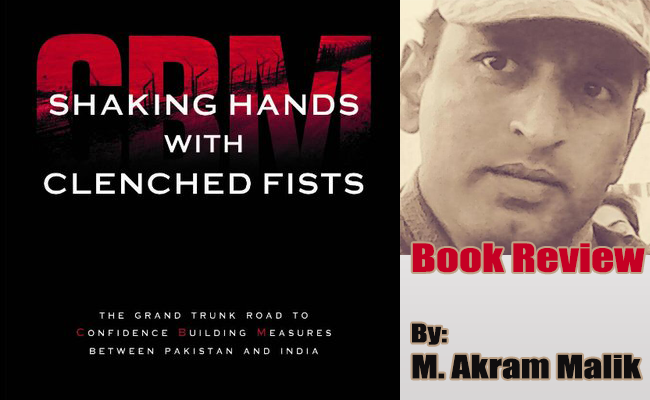By: M. Akram Malik
Shaking Hands with Clenched Fists’ by Dr Asma Shakir Khawaja is the first academic account which represents Pakistan’s narrative on the India-Pakistan relations. The content of the book encompasses Confidence Building Measures (CBMs) and bilateral relations between both India and Pakistan, therefore, this book would provide pertinent insights to peace builders, policymakers, government officials, students, researchers, social scientists, historians and scholars of international relations. Moreover, it is a most critically required effort to fill the void in the existing body of knowledge on this important subject i.e. Pakistan’s perspective which had so far remained amiss. ‘Shaking Hands with Clenched Fists’ is vital as it is expected to balance the existing one-sided or biased views on the subject and holistically shed light on the bilateral relations between India and Pakistan.
The author categorically explains the historical perspective of political, economic and social affairs of the two countries and impressively identifies the loopholes, disagreements and differences of interest, reasons behind lack of political will for sustainable peace, intentions with Kashmir and failure of various CBMs so far. She also sheds light on Pakistan’s cooperation vs India’s expansionist approach, role of perception building in derailing peace processes, conflict over natural resources, impact of treaty violations and the overall impact on the masses in sub-continent due to socio-political tensions between long-standing rivalries. Thus, in totality, not a single domain is left untouched in this book which impacts the complex nature of bilateral relations between Pakistan and India.
The bone of contention and hostile relations between India and Pakistan are predominantly credited to the Kashmir Conflict and it has kept India and Pakistan engaged in numerous military confrontations incessantly. The author is rightly of the view that the worst part of having hostile relations with a neighboring state is that it keeps both countries busy in exhausting huge amount of resources over arms race. The uncertainty of this acrimonious relationship has eventually resulted in the nuclearization of the South Asian region. Owing to the increasing conventional asymmetry in India’s favour, the only improvement which this nuclearisation of sub-continent has brought is that it has successfully maintained a negative peace between both countries since 1999. Indian Foreign Policy and Media Policy has always remained hostile and aggressive, often due to indigenous pressure and inflexibility. Conversely, Pakistan’s policies towards India have remained diplomatic and subtle despite experiencing frequent offensive attacks, breaches of truce and treaties from Indian side. Indian media needs capacity building for peace journalism. The negative role being played by an adverse and antagonist Indian media which incessantly continues to spew venom amongst the Indian masses by feeding hatred, building negative perceptions and stoking hostile narratives. She expertly points out the fact that several books, articles and research papers are purposefully written by Indian authors which not only blatantly propagate the Indian narrative but also spread anti-Pakistan sentiments thus playing a predominant role in developing hatred and perception building among the Indian nation to the detriment of the any improvement in the bilateral relations.
The author brilliantly surmises that South Asia continues to remain as one of the least economically integrated region in the world owing to continued hostility between the two major players of this very important region, Pakistan and India. Besides the obvious economic advantages which both these countries would accrue by resolving their long-standing disputes/ issues, they would also be in a better position to collectively consider and counter the increasing threat of transnational movement which continues to breed instability in the region.
The book effectively fills the critical void in the literature on this very important subject and is anticipated to make a huge difference. It provides researchers, scholars and academics with useful insights to help find ways and means to effectively improve relations in the entire South Asian region











